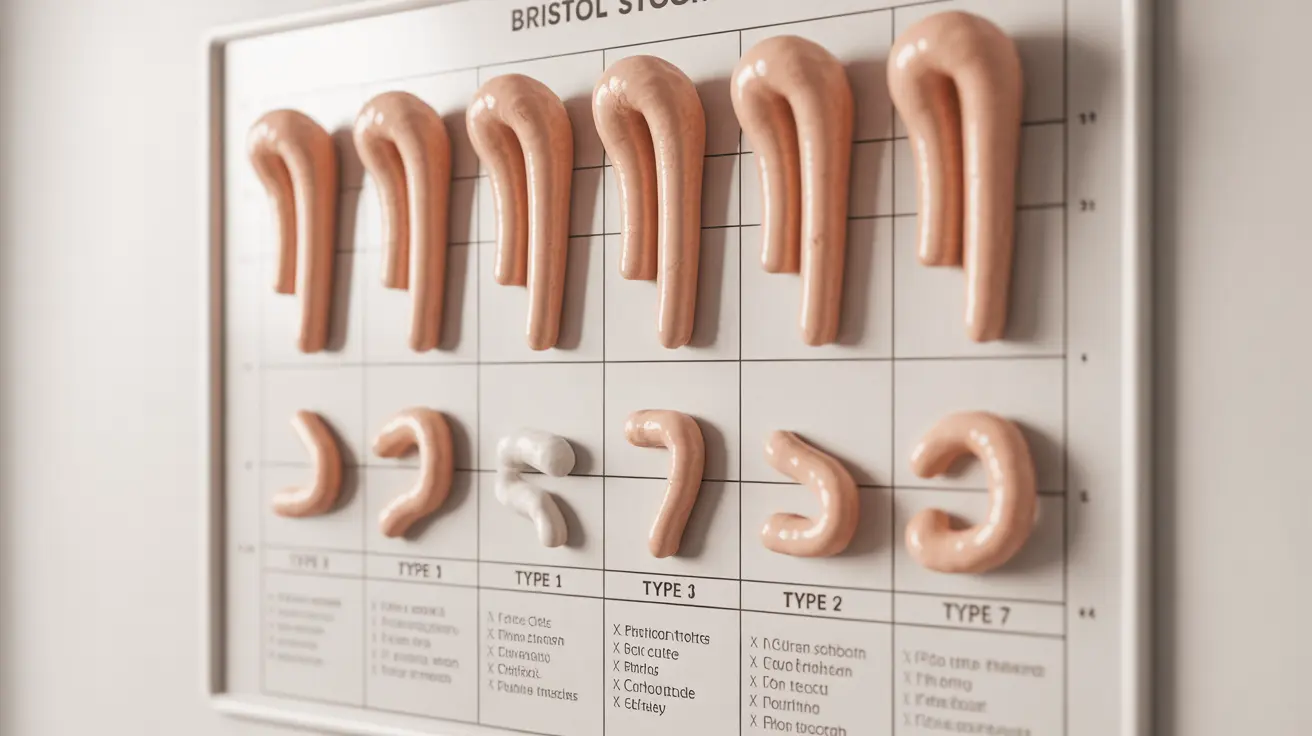Understanding your bowel movements can provide valuable insights into your digestive health and overall well-being. The Bristol Stool Chart, a medical tool developed by researchers at the Bristol Royal Infirmary, helps both patients and healthcare providers classify and discuss stool characteristics in a standardized way.
By learning to identify and understand different stool types, you can better monitor your digestive health and recognize when changes might warrant medical attention. This guide will help you navigate the Bristol Stool Chart and understand what your stool is telling you about your health.
The Seven Types of Stool Explained
The Bristol Stool Chart categorizes bowel movements into seven distinct types, each indicating different aspects of digestive function:
Type 1: Separate Hard Lumps
These small, hard pellets resemble nuts and are difficult to pass. This type indicates severe constipation and suggests stool has been in the colon for an extended period.
Type 2: Lumpy and Sausage-Like
This type appears as a solid mass but with a lumpy surface. While easier to pass than Type 1, it still indicates constipation and slower-than-optimal transit time.
Type 3: Sausage with Cracks
This form maintains a solid structure with surface cracks. It represents the firmer end of normal stools and suggests good digestive health.
Type 4: Smooth Sausage
Smooth and snake-like in appearance, Type 4 is considered the ideal stool form. It indicates optimal digestive health and proper transit time.
Type 5: Soft Blobs
These soft pieces have clear-cut edges and pass easily. While still considered normal, they may indicate faster transit time or dietary changes.
Type 6: Mushy Consistency
With a fluffy, mushy texture and ragged edges, this type suggests inflammation or may indicate mild diarrhea.
Type 7: Entirely Liquid
Completely liquid with no solid pieces, Type 7 indicates severe diarrhea and requires attention to prevent dehydration.
Improving Your Digestive Health
Diet and Lifestyle Modifications
To maintain healthy bowel movements, consider these dietary and lifestyle changes:
- Increase fiber intake through fruits, vegetables, and whole grains
- Stay properly hydrated by drinking adequate water
- Maintain regular physical activity
- Establish consistent bathroom habits
- Manage stress levels effectively
When to Seek Medical Attention
While occasional variations in stool type are normal, certain changes warrant medical consultation:
- Persistent changes lasting more than two weeks
- Blood in stool
- Severe abdominal pain
- Unexplained weight loss
- Chronic diarrhea or constipation
Frequently Asked Questions
What are the seven types of poop on the Bristol Stool Chart, and what do they indicate about digestive health?
The Bristol Stool Chart categorizes stools into seven types: Type 1 (separate hard lumps) and Type 2 (lumpy sausage-like) indicate constipation; Type 3 (sausage with cracks) and Type 4 (smooth sausage) are ideal; Type 5 (soft blobs), Type 6 (mushy), and Type 7 (entirely liquid) suggest increasingly loose stools or diarrhea.
How can I prevent or manage constipation based on my stool type on the Bristol Stool Chart?
To manage constipation, increase fiber intake, stay hydrated, exercise regularly, and maintain consistent bathroom habits. If you frequently experience Type 1 or 2 stools, these lifestyle changes can help improve stool consistency.
What are the best foods to eat for improving stool consistency and promoting regular bowel movements?
Focus on fiber-rich foods like whole grains, leafy greens, fruits, and legumes. Include probiotic foods such as yogurt and fermented vegetables. Stay hydrated and limit processed foods and excessive dairy products.
Can changes in stool type, such as going from Type 3 to Type 6, indicate a specific health issue or condition?
Yes, significant changes in stool type can indicate various health issues, including infections, inflammatory bowel disease, or dietary intolerances. Sudden changes should be monitored and discussed with a healthcare provider if persistent.
How often should I consult a healthcare professional if I notice persistent changes in my stool type or consistency?
Consult a healthcare professional if you notice changes in stool type lasting more than two weeks, especially if accompanied by concerning symptoms like severe pain, blood in stool, or unexplained weight loss.




